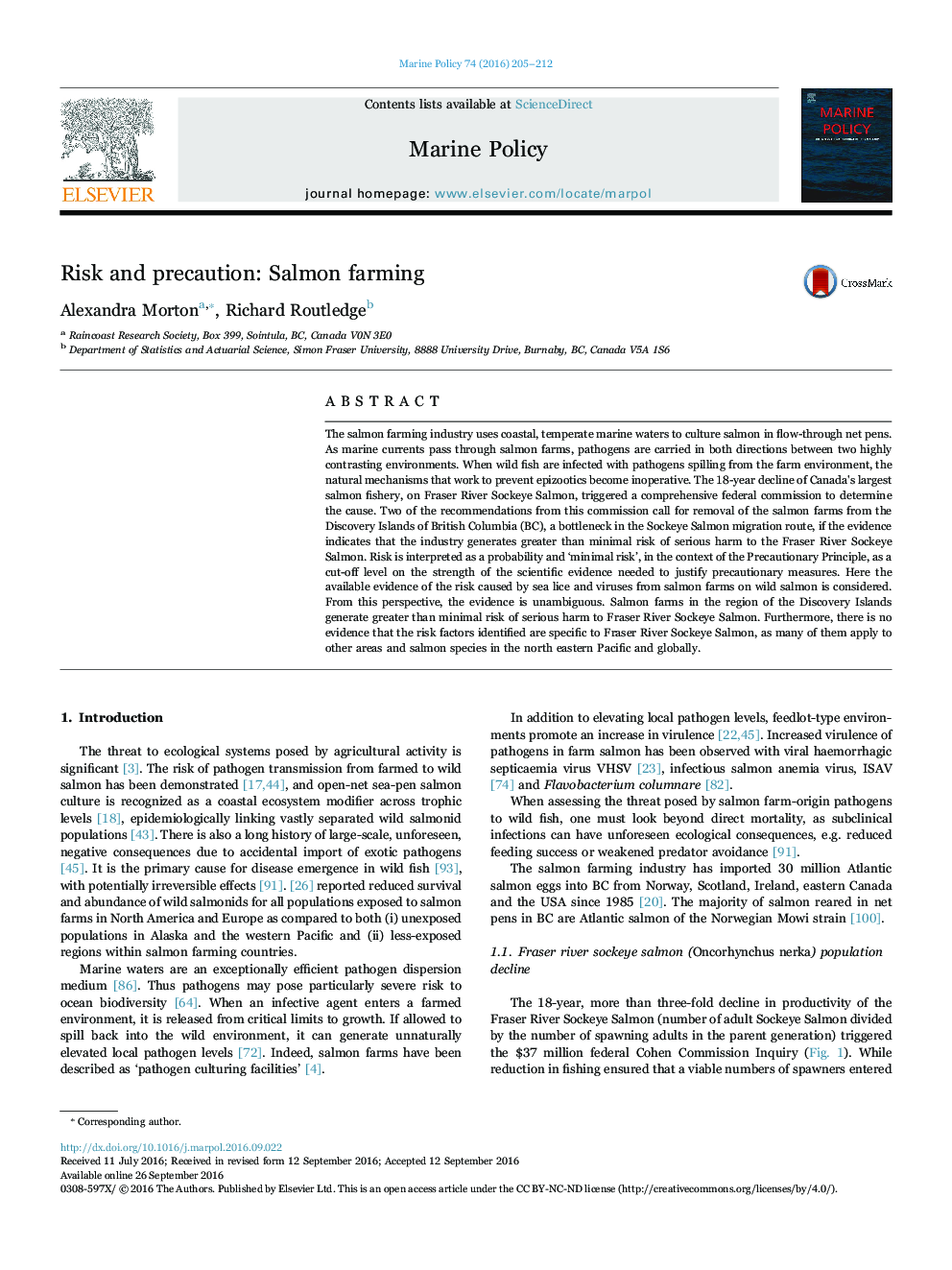| کد مقاله | کد نشریه | سال انتشار | مقاله انگلیسی | نسخه تمام متن |
|---|---|---|---|---|
| 5118201 | 1485505 | 2016 | 8 صفحه PDF | دانلود رایگان |
- The collapse of Canada's biggest salmon run triggered a commission which made 75 recommendations.
- Two of the recommendations focused on the potential risk of salmon farming.
- If salmon farms cause greater than minimal risk of serious harm they should cease to operate by 2020.
- “Minimal” is defined as a proportion and the risk is evaluated through the weight of science.
- Salmon farms in the region of concern present greater than minimal risk of serious harm.
The salmon farming industry uses coastal, temperate marine waters to culture salmon in flow-through net pens. As marine currents pass through salmon farms, pathogens are carried in both directions between two highly contrasting environments. When wild fish are infected with pathogens spilling from the farm environment, the natural mechanisms that work to prevent epizootics become inoperative. The 18-year decline of Canada's largest salmon fishery, on Fraser River Sockeye Salmon, triggered a comprehensive federal commission to determine the cause. Two of the recommendations from this commission call for removal of the salmon farms from the Discovery Islands of British Columbia (BC), a bottleneck in the Sockeye Salmon migration route, if the evidence indicates that the industry generates greater than minimal risk of serious harm to the Fraser River Sockeye Salmon. Risk is interpreted as a probability and 'minimal risk', in the context of the Precautionary Principle, as a cut-off level on the strength of the scientific evidence needed to justify precautionary measures. Here the available evidence of the risk caused by sea lice and viruses from salmon farms on wild salmon is considered. From this perspective, the evidence is unambiguous. Salmon farms in the region of the Discovery Islands generate greater than minimal risk of serious harm to Fraser River Sockeye Salmon. Furthermore, there is no evidence that the risk factors identified are specific to Fraser River Sockeye Salmon, as many of them apply to other areas and salmon species in the north eastern Pacific and globally.
Journal: Marine Policy - Volume 74, December 2016, Pages 205-212
